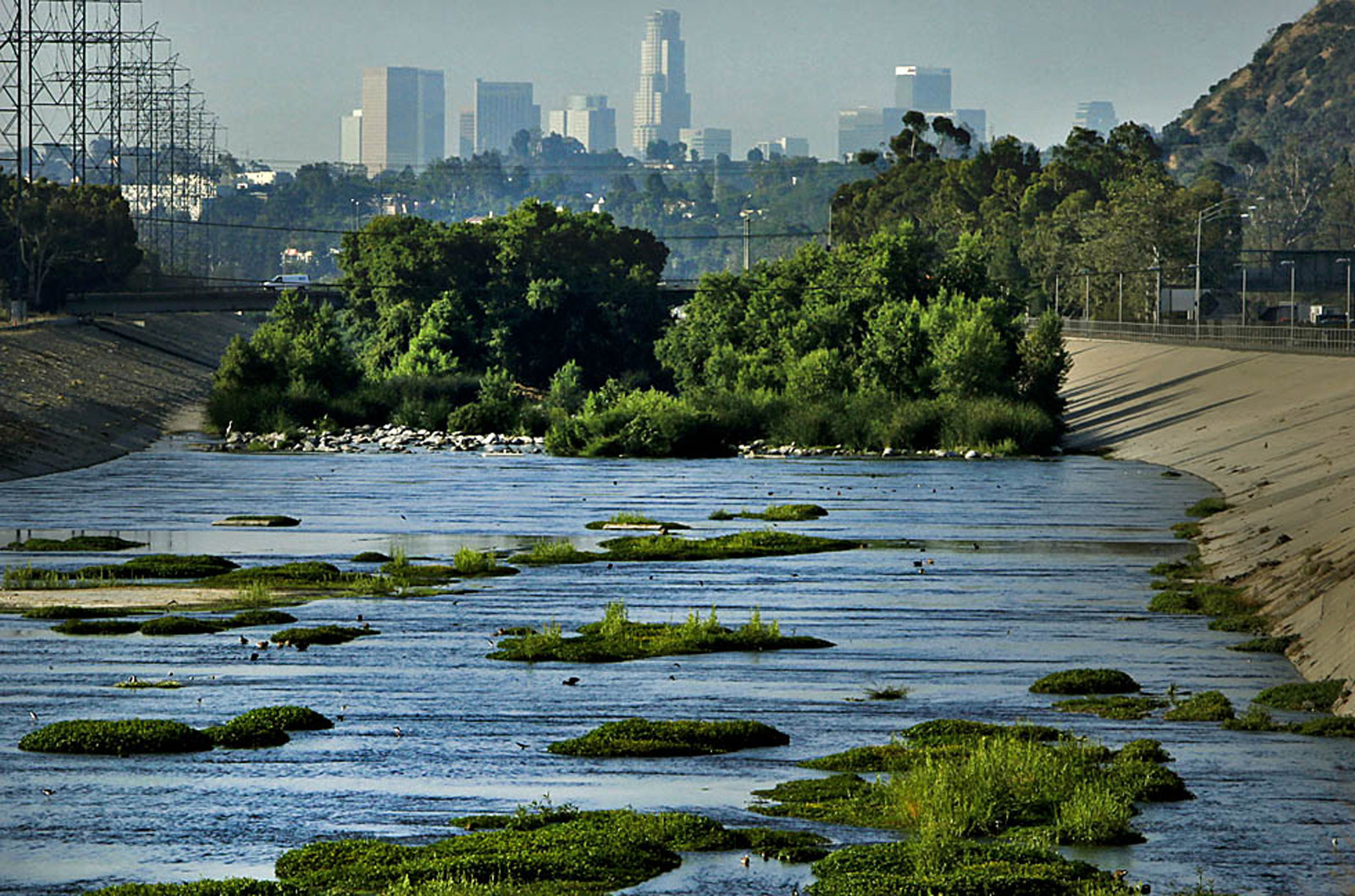This post may contain affiliate links. We may earn money or products from the highlighted keywords or companies or banners mentioned in this post.

“LA has a river?” That was the incredulous reaction I got when I told friends I was planning to kayak the Los Angeles River – that and jokes about polluted water and mutated fish.
Despite living in a city that’s steeped in Hollywood history, Angelenos seem have a short memory: the waterway, after all, has made appearances in films such as Grease, Chinatown and Terminator 2: Judgment Day, as well as in countless TV shows. It also turns up on the news occasionally, when firefighters pull unlucky people from its rushing water during rainstorms.
Films tend to feature the river’s concrete-lined, graffiti-covered sections (after a series of deadly floods in the 1930s, the US Army Corps of Engineers turned much of the waterway into a flood-control channel), but in actuality, the Los Angeles River is a whopping 51 miles long, running from Canoga Park in the San Fernando Valley, along the edge of downtown LA and all the way to the ocean at Long Beach. And the whole river is enjoying a renaissance as restored park-like sections are now open for kayaking – at least for a short window in the summer months, between July and September.
When I arrived at the Balboa Boulevard bridge, located about 15 miles northeast of downtown LA, I had a hard time imagining I was in kayaking country. Then, down a sloping path, I spotted water surrounded by plants and bushes, and an egret flew overhead. There was indeed life in this urban waterway.
I’d signed on for a group kayaking trip with LA Conservation Corps, an organization that educates and employs people in a variety of conservation projects, including building parks, planting trees, refurbishing hiking trails and forming community gardens. They and several other groups are allowed to lead kayaking tours along the river; going by yourself is illegal.
As our group of 10 paddled downstream, the hum of traffic was replaced with the sounds of birds, buzzing insects and splashing water. Reeds, bushes and sunflowers appeared at the river’s edge. The riverbed was a mix of mud, gravel and sand, peppered with algae-covered utility pipes and the odd lost golf ball from a nearby course.
This two-and-a-half mile section of the river cautiously opened to the public in 2011 as part of a pilot programme. Three years before, environmentalist Joe Linton, George Wolfe of LA River Expeditions, and a few others had trespassed onto the then-closed river in an attempt to prove that the waterway was navigable by kayak. Though much of their three-day journey was accomplished on foot, their adventure convinced the Environmental Protection Agency to deem the waterway navigable, and thus subject to a variety of environmental regulations.
Linton was among the group kayaking with me, and he explained that Los Angeles gets some of its usable water from the river, and has for years. The river was one of the reasons that the first Spanish settlers – and the native peoples before them – planted roots here.
As we paddled on, majestic herons flew overhead. We spotted the blue flash of a kingfisher, a sure sign that edible fish resided below. At the newly christened Rocky Rapids we took a stop-start, bumpy slide down a tiny rocky waterfall, while at the section of the river called Lake Balboa Ledge, we had to get out and walk among huge boulders. I loved it – and felt a world away from the busy city.
Egrets stalked the water for minnows as we passed through the Grand Canyon, a mini-version of the Colorado landmark, where craggy earthen walls towered over us – the result of erosion caused by non-native plants. Then we bumped and floated down Cattail Shoot, another jumble of water and huge stones.
As we neared the end of our journey, back at the Burbank Boulevard bridge, we were reminded of the challenges still facing the river: a shopping cart was partly submerged and dirty plastic bags clung to tree branches on the riverbank.
“They’re swept into the drains from all over the city, and they’re the river’s worst enemy,” said Linton, adding that the plastic bags never biodegrade and can kill larger animals on shore.
We passed someone fishing from the riverbank (you can catch catfish, tilapia and carp here) and a couple of sunburnt sunbathers in the dense growth at the river’s edge. Before hitting land, we gathered our kayaks and talked about the river’s future.
In 2014, the US Army Corps of Engineers proposed a $1 billion revitalisation plan for an 11-mile stretch of the river between downtown Los Angeles and Griffith Park – a stretch that’s not yet accessible or open to the public. The plan has yet to be approved, but it did prompt the Los Angeles City Council to promise to restore the 30 or so river miles that run through Los Angeles County, from downtown to Canoga Park. Among other things, that could lead to the construction of wider bridges and the re-greening of park areas, as well as the addition of bike lanes, walkways and cafes along the riverbanks.
One of the earliest written records of the Los Angeles River was by penned Father Juan Crespi, the diarist for the Spanish expedition led by Gaspar de Portola. In 1769, Crespi noted that the area was a “lush and pleasant space”. Now, nearly 250 years later, Angelenos hope it will become that once again.










